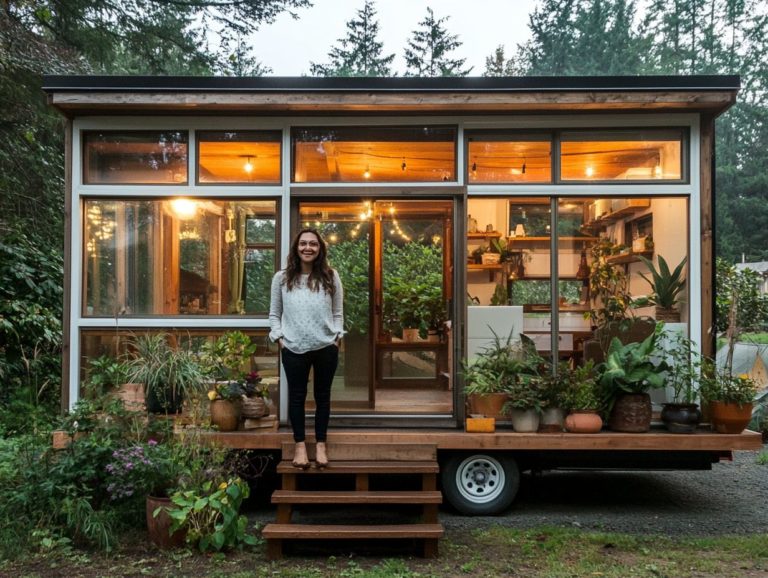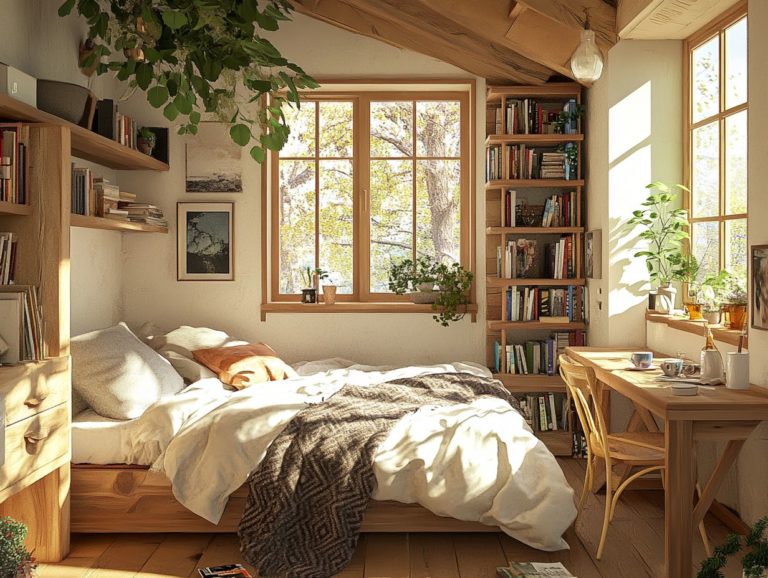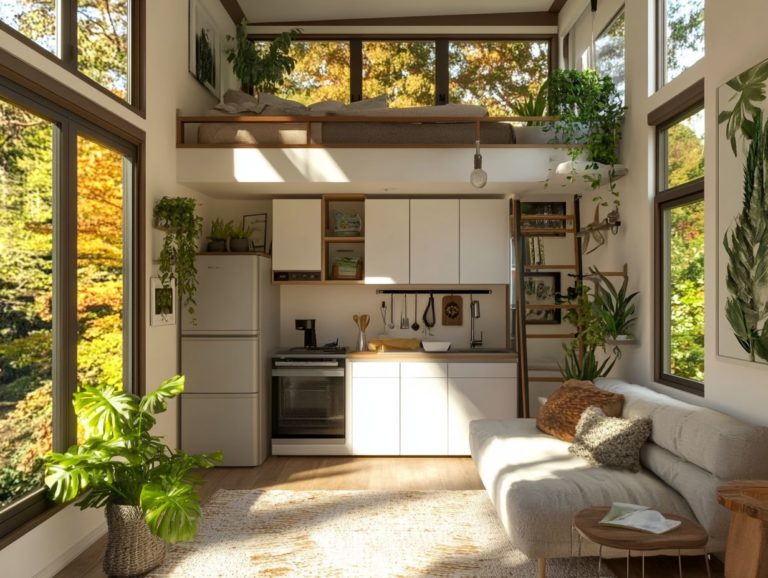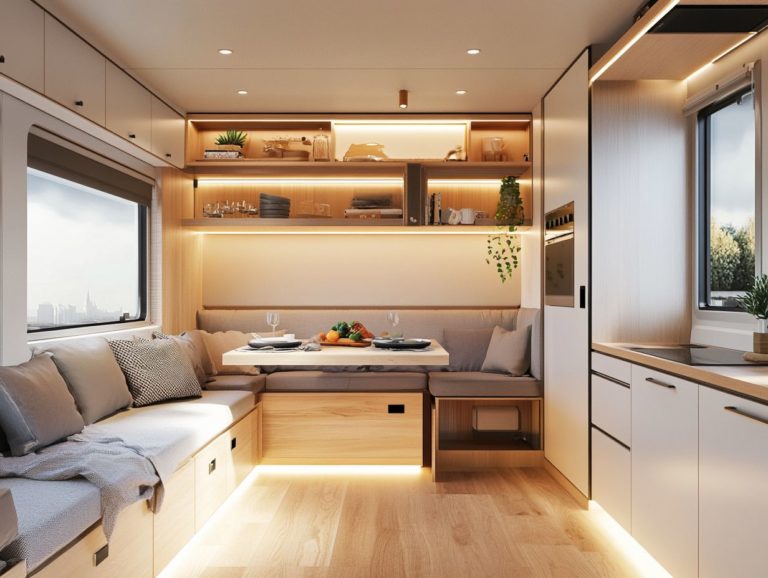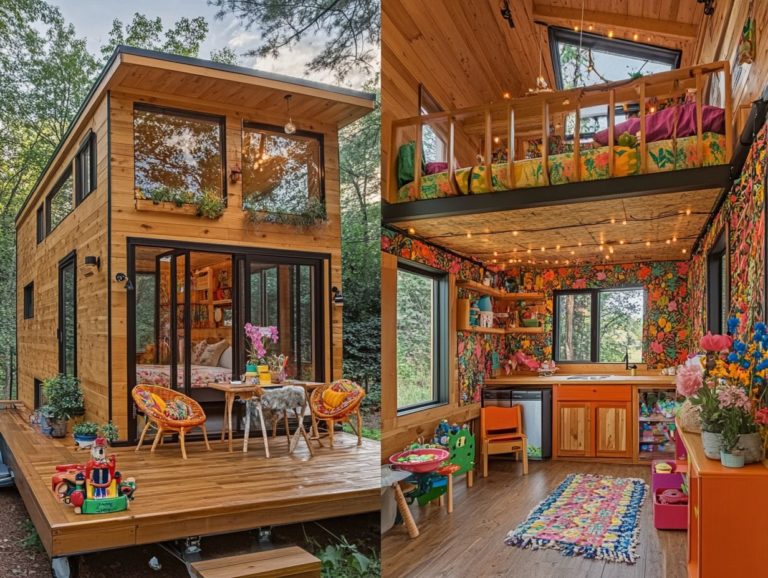Tiny House Living: A Growing Trend
Are you tired of the clutter and high costs of traditional homes? Tiny house living isn t just a trend; it s a bold lifestyle choice that embraces simplicity, sustainability, and financial freedom.
This article delves into the essence of tiny house living, showcasing its distinct characteristics and benefits, from significant cost savings to a positive environmental impact. It also addresses the challenges you might encounter, offers guidance on how to embark on this journey, and shares tips for making the most of your compact space.
By the end, you ll gain a clearer understanding of whether this minimalist lifestyle aligns with your aspirations.
Contents [hide]
- Key Takeaways:
- What is Tiny House Living?
- Benefits of Tiny House Living
- Challenges of Tiny House Living
- How to Get Started with Tiny House Living
- Designing and Organizing a Tiny House
- Is Tiny House Living Right for You?
- Frequently Asked Questions
- What is Tiny House Living and why is it becoming a growing trend?
- What are the benefits of living in a tiny house?
- Is tiny house living suitable for families?
- What challenges might you face while living in a tiny house?
- Do I need to own land to live in a tiny house?
- What are some essential considerations before jumping into tiny house living?
Key Takeaways:
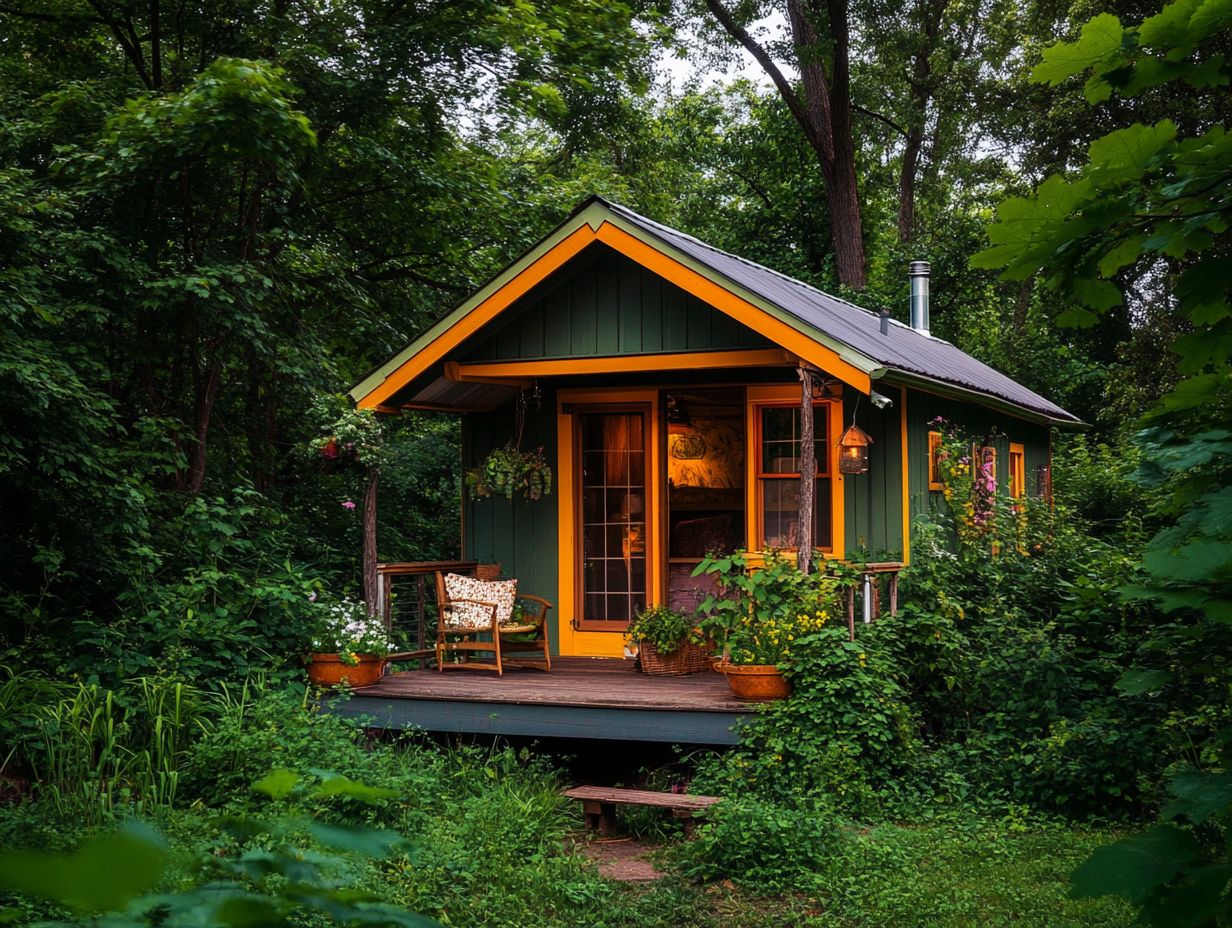
- Discover the financial, environmental, and lifestyle benefits of tiny house living, including reduced expenses, smaller carbon footprint, and simplified living.
- Learn about the challenges of tiny house living, such as adjustments and limitations, and understand if this lifestyle is the right fit for you.
- Find out how to get started with tiny house living, whether it be building, buying, or renting a tiny house, and get tips on designing and organizing the space for maximum functionality.
What is Tiny House Living?
Tiny House Living embodies a transformative lifestyle choice for you, characterized by the art of downsizing your dwelling to embrace a simpler, more eco-friendly existence. This movement has gained significant traction in recent years, highlighting the myriad benefits of small homes that typically range from 100 to 400 square feet.
With an average size just a fraction of traditional homes, you’ll discover that tiny homes not only lower your living costs but also promote a clutter-free life. This encourages deeper connections with both nature and community. Many tiny house owners, like yourself, find that this minimalist lifestyle enhances their overall quality of life while significantly reducing their environmental footprint. Understanding the importance of zoning can further enrich your tiny house experience.
Definition and Key Characteristics
Tiny homes represent a shift towards compact living spaces that emphasize efficiency and sustainability true hallmarks of the tiny house movement.
These dwellings are masterfully crafted to maximize functionality while minimizing excess space. They make an excellent choice for anyone eager to downsize and simplify their lives. By utilizing eco-friendly materials like reclaimed wood and low-VOC finishes, these homes not only reduce environmental impact but also foster a warm and inviting atmosphere. To learn more about this lifestyle, check out understanding the tiny house movement.
The minimalist design encourages you to concentrate on what genuinely matters, promoting a lifestyle that is free from clutter and distraction. This approach resonates deeply with many individuals seeking a more meaningful existence, liberated from the pressures of traditional housing and consumerism.
Benefits of Tiny House Living
The benefits of tiny house living go far beyond mere financial savings; this lifestyle presents remarkable environmental advantages and cultivates a thriving community centered on sustainability and simplicity.
As housing costs continue to escalate, you may find yourself drawn to the tiny home trend. Embracing smaller living spaces can significantly lower your mortgage or rental expenses while also reducing your carbon footprint.
The affordability of tiny house living promotes a minimalist lifestyle. This allows you to invest more in enriching experiences instead of accumulating material possessions.
Don t wait! Explore tiny house living today and discover how it can transform your life for the better.
Financial, Environmental, and Lifestyle Benefits
Tiny house living offers remarkable financial savings and a smaller environmental footprint. It also promotes a lifestyle that emphasizes experiences over material possessions.
By choosing to downsize, you could see your mortgage payments drop by as much as 80%. Now, you can use your financial freedom to travel, pursue hobbies, and invest in personal growth. For instance, a typical tiny home might set you back around $30,000, compared to the national average of $300,000 for a conventional house. Living in a compact space often leads to lower utility bills, with tiny homeowners reporting energy savings of up to 50%. Embracing tiny house living can also teach valuable skills for adapting to limited space.
These homes use fewer materials during construction, which helps reduce their carbon footprint by over 30%. This lifestyle promotes simplicity and mindfulness, leading you to a more fulfilling daily experience centered on meaningful connections and adventures, as seen in the top tiny house design trends.
Challenges of Tiny House Living
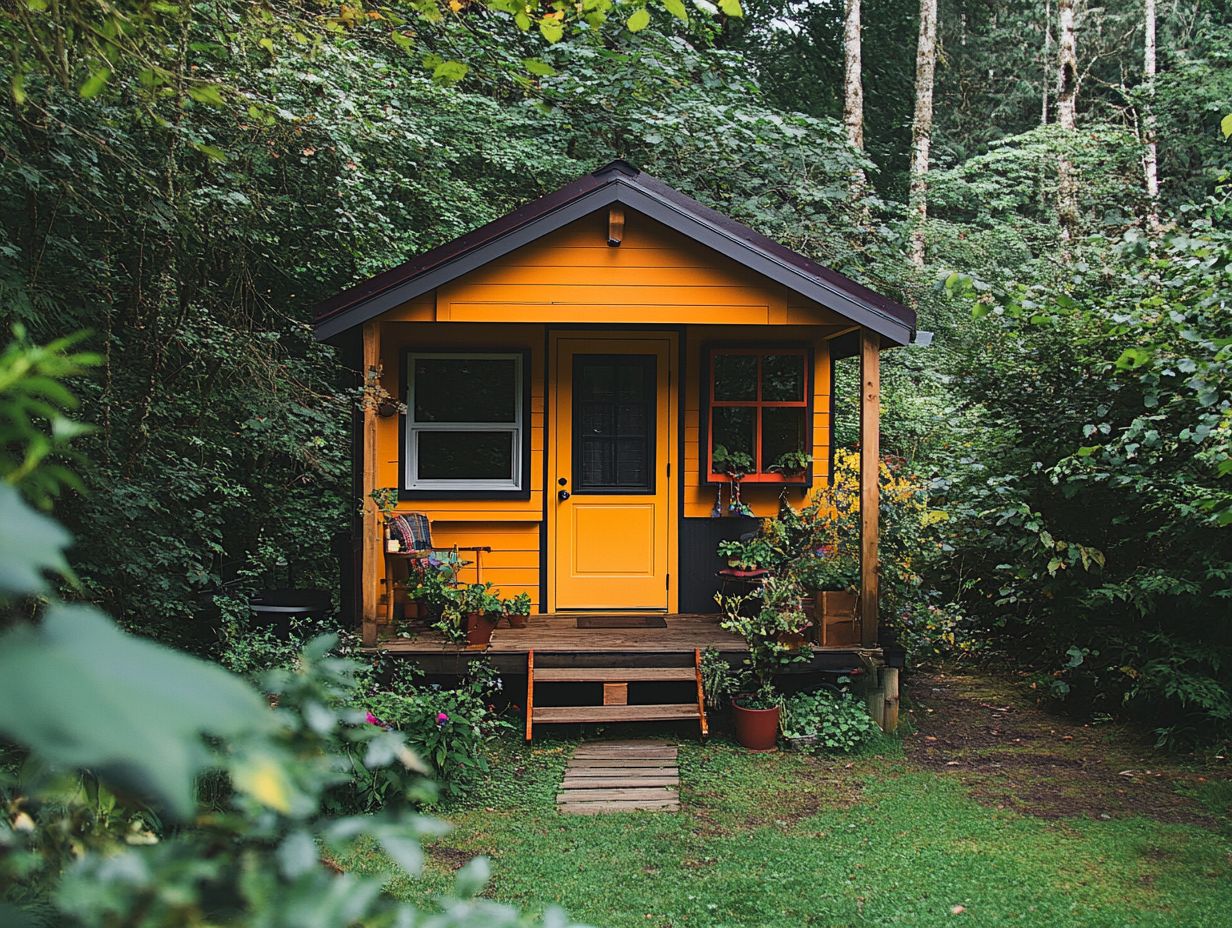
Despite the rising allure of the tiny house trend, those considering ownership often encounter a unique set of challenges that could lead to tiny house regret, especially in areas like Kansas and North Dakota if not thoughtfully navigated.
Moving to a smaller space requires serious downsizing and reevaluating how you live, which can feel daunting. Various limitations like rules that control how land can be used, financing options, and the constraints of physical space can further complicate your journey.
It s exciting to explore your personal needs and preferences before fully committing to this lifestyle.
Adjustments and Limitations
Adapting to tiny house living can be challenging due to zoning laws and space limitations.
These challenges might require you to rethink not just your physical possessions but also your daily routines and emotional well-being. For instance, you may find yourself needing to downsize your belongings, which can lead to a more minimalist way of life that feels overwhelming at first.
To navigate these hurdles, consider embracing organizational tools like multifunctional furniture that can maximize your space. Establishing daily habits that focus on simplicity and intentionality can also make a significant difference.
On an emotional level, cultivating a sense of community can be invaluable. Engaging with fellow tiny house enthusiasts provides the support and encouragement you need, helping you feel less isolated as you embark on your journey toward a more sustainable and intentional way of living. Learning from tiny house living lessons can enhance this experience even further.
How to Get Started with Tiny House Living
Starting your tiny house journey involves key decisions you need to make. You ll need to consider whether to build, buy, or rent a tiny house, as each option brings its own set of distinct advantages and challenges within the thriving tiny homes market.
Building, Buying, or Renting a Tiny House
When you re contemplating tiny house living, it s essential to weigh your options: build, buy, or rent. Each choice comes with its own set of advantages and challenges.
Building a custom tiny home offers you the chance to personalize your space, tailoring it to your exact needs and style preferences. However, this route can be a lengthy and complex journey, often presenting budgeting hurdles, especially for those who may not be well-versed in construction. Exploring tiny house living: freedom from clutter can provide valuable insights on how to navigate these challenges.
On the flip side, purchasing a pre-built tiny home from reputable companies like Tumbleweed Tiny House Company provides convenience and the allure of immediate occupancy. Just keep in mind that this option might come with limited customization choices and a potentially higher price tag. For those considering a tiny house, it’s also essential to understand the legal framework of tiny house living.
Renting offers you the flexibility to experience tiny living without the commitment of ownership, but it may lack the long-term stability and personal touch you might crave.
Financing options can vary widely across these choices, significantly impacting which path ultimately proves to be the best financial decision for you as a prospective tiny home enthusiast. Choosing the right path is crucial for a fulfilling tiny home experience!
Designing and Organizing a Tiny House
Designing and organizing a tiny house demands a strategic approach to maximize both space and functionality. The limited square footage presents unique challenges that require your thoughtful planning and creativity.
Maximizing Space and Functionality
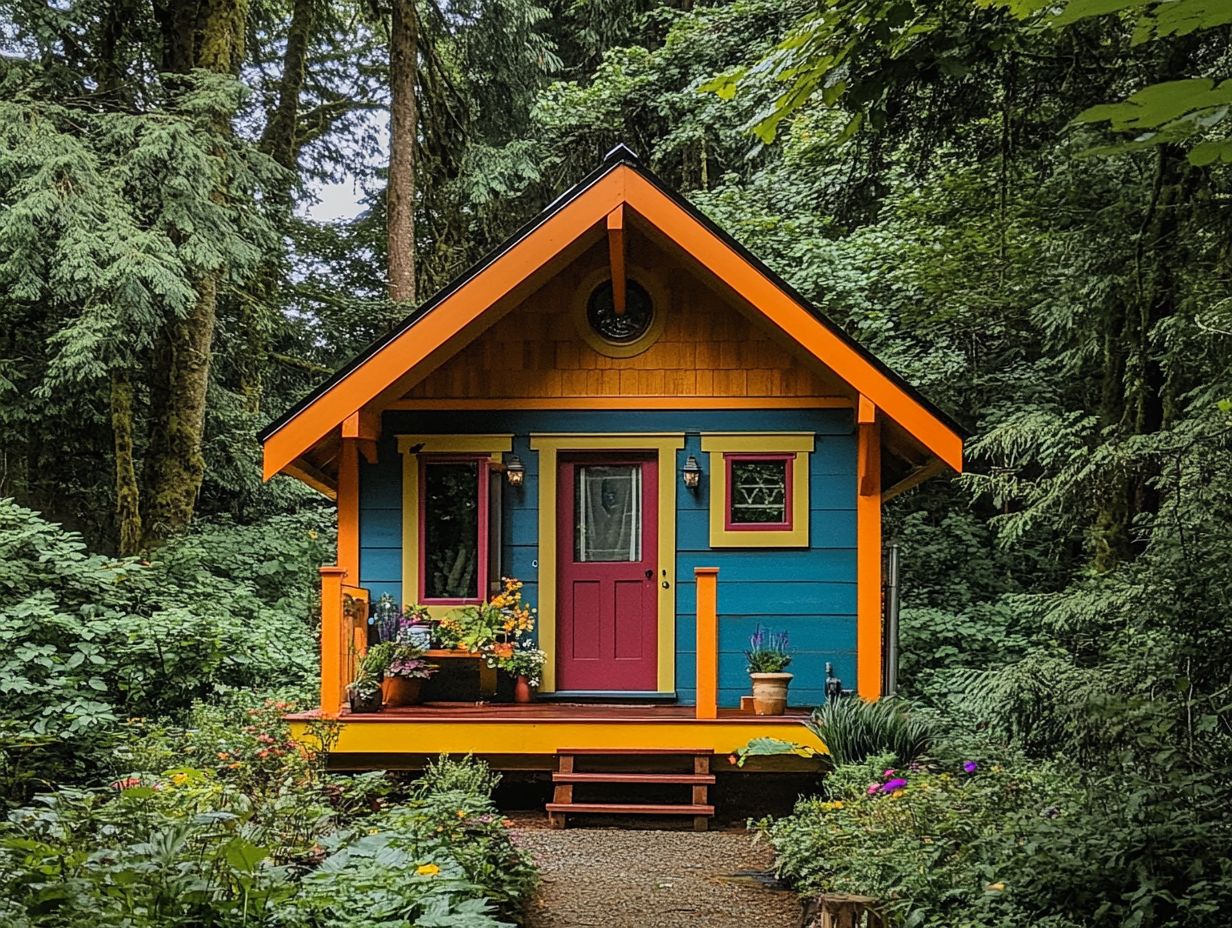
Maximizing space and functionality in your tiny house is essential for creating a comfortable living environment that meets your needs.
Smart storage ideas are key. They provide clever ways to tuck away your belongings without compromising style. For example, consider incorporating under-bed storage drawers and wall-mounted shelves to utilize your vertical space effectively. Multi-functional furniture, like a coffee table that doubles as a dining table, adapts effortlessly to various activities throughout your day.
An open layout that eliminates unnecessary walls fosters a sense of spaciousness and allows natural light to flow freely, significantly enhancing the overall livability of your compact home.
Is Tiny House Living Right for You?
Determining whether tiny house living aligns with your aspirations requires thoughtful reflection on various elements. You’ll want to weigh your lifestyle preferences, assess your financial situation, and consider your future plans as a tiny house owner.
Each factor plays a crucial role in shaping your decision, ensuring that your choice resonates with your unique vision for life.
Factors to Consider Before Making the Move
Before you dive into tiny house living, evaluate key factors that could influence your decision, such as lifestyle compatibility and financial readiness.
Location is a critical element in this transition. Be sure to check local zoning laws to avoid surprises! Restrictions may dictate where you can place your tiny home.
If you’re considering remote work opportunities, think about how your new living space will support a productive work environment. Ensure you have robust internet connectivity and designated work areas to maintain your efficiency.
For those planning to age in place, it’s vital to seek out accessibility features within your tiny home, like single-level layouts and step-free entries. This will help ensure your independence and comfort for years to come.
Frequently Asked Questions
What is Tiny House Living and why is it becoming a growing trend?
Tiny House Living refers to the lifestyle of living in a small, often mobile, house that is typically less than 400 square feet. It has become a growing trend due to its affordability, minimalistic approach, and sustainable living.
What are the benefits of living in a tiny house?
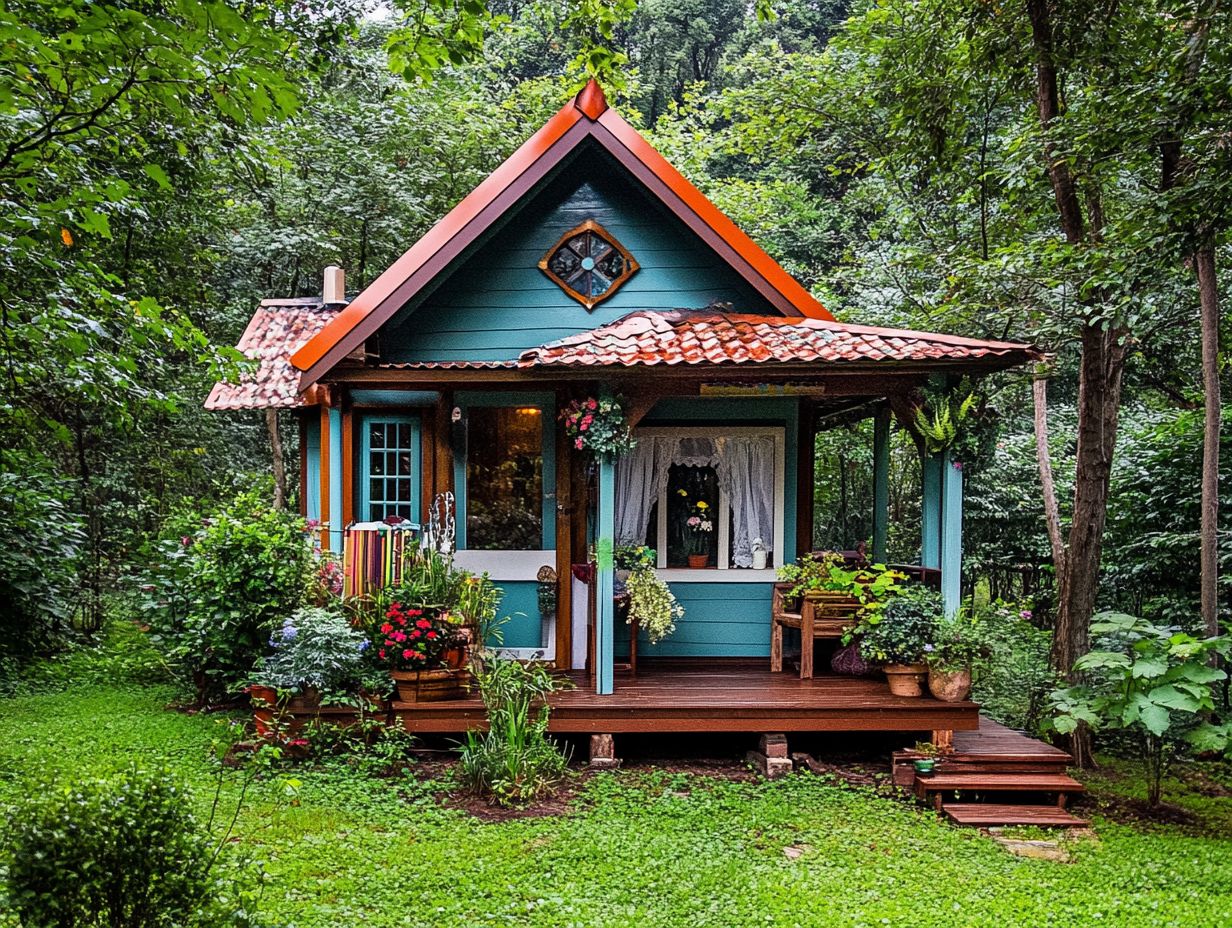
Living in a tiny house allows for financial freedom, as it typically costs less than a traditional house. It also promotes a simpler and more environmentally-friendly lifestyle, with less space to maintain and fewer material possessions.
Is tiny house living suitable for families?
While tiny house living is often associated with single individuals or couples, it can also be a great option for families. With careful planning and creative design, a tiny house can provide a comfortable and functional living space for a family.
What challenges might you face while living in a tiny house?
Like any living situation, there are challenges to living in a tiny house. Some common challenges include a lack of storage space, limited privacy, and adjusting to a smaller living area. However, many people find that the benefits outweigh these challenges.
Do I need to own land to live in a tiny house?
No, owning land is not a requirement for living in a tiny house. Many people choose to park their tiny house on a friend or family member’s property, rent a space in a tiny house community, or even travel with their tiny house.
In conclusion, tiny house living can offer a unique lifestyle filled with freedom and simplicity. By carefully considering your needs and making thoughtful choices, you can create a space that truly reflects your vision for life.
What are some essential considerations before jumping into tiny house living?
Thinking about tiny house living? Here are key factors you must consider before diving in!
Reflect on your lifestyle and needs. Location, local building rules, and budget are crucial aspects to evaluate.
Talking to people who currently live in tiny houses can provide valuable insights and advice.

